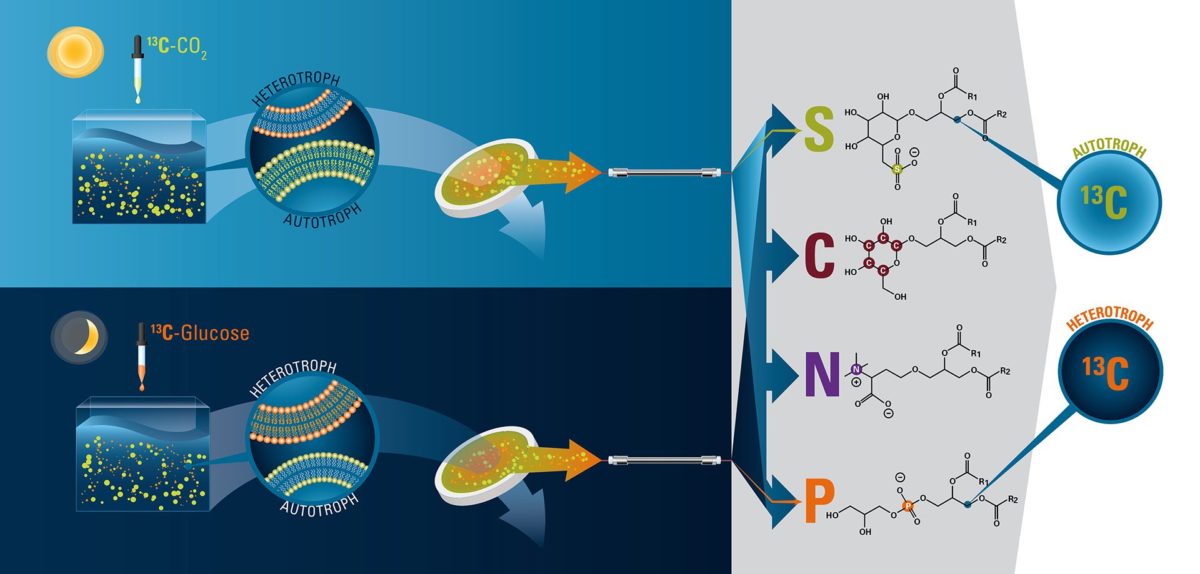Use of lipids to study the relationship between microbes and carbon
The ocean has two kinds of microbes: Autotrophs use sunlight to convert carbon dioxide into organic carbon, while heterotrophs convert organic carbon such as glucose into nutrients. Scientists are developing new tools to identify which types live in the ocean by looking at lipids, the chemical compounds that make up cell walls. In laboratory experiments, scientists first filter seawater to collect cells. Using liquid chromatography, they then separate different lipids based on the elements (sulfur carbon, nitrogen, or phosphorus) in their “head groups.” Finally, they use mass spectrometers to distinguish whether autotrophs or heterotrophs made the lipids. (Illustration by Amy Caracappa-Qubeck, © Woods Hole Oceanographic Institution)
Image and Visual Licensing
WHOI copyright digital assets (stills and video) contained on this website can be licensed for non-commercial use upon request and approval. Please contact WHOI Digital Assets at images@whoi.edu or (508) 289-2647.

